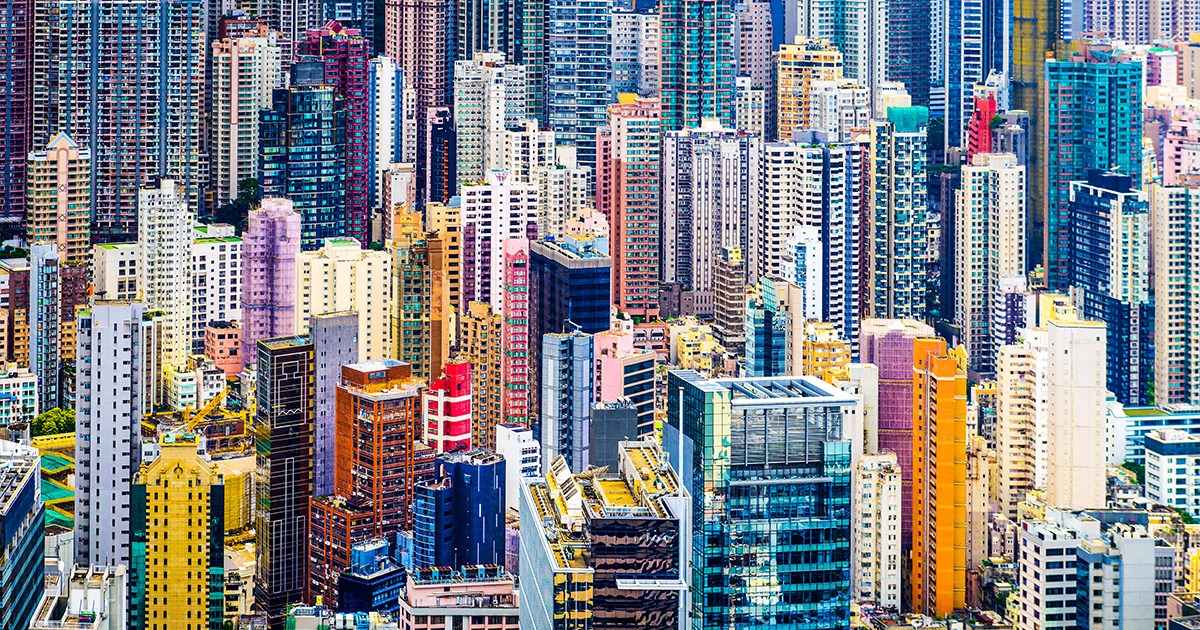Nathan Gardels is the editor-in-chief of Noema Magazine. He is also the co-founder of and a senior adviser to the Berggruen Institute.
For the first time in the history of human civilization, most people live in cities. Some mega-conglomerations like Shanghai or Delhi are the size of countries, with populations of more than or near 20 million inhabitants. Climate change, water, garbage, transportation flows and digital connectivity will shape the future quality of daily life in our ever-denser habitat. The clash between cultural globalization and the reassertion of identity will also define a new urban character with both generic and unique qualities.
In The WorldPost this week, we examine these dimensions of the urban condition in the 21st century.
“Urban growth increases the demand for water, overtaxing infrastructure as millions of people crowd into concentrated spaces with limited supplies of fresh water,” writes Ashley Dawson. “Some of the fastest growing cities are in areas with limited access to fresh water. And many of these cities are located in regions particularly susceptible to the impacts of climate change, which in many places means higher temperatures, more heat and evaporation, and more demand for water.” In short, as Dawson puts it, “thirsty cities.”
He illustrates the coming challenge through the prism of Cape Town, South Africa, which faces a water crisis due to the drop in precipitation over recent years. Through a combination of lower water pressure, higher water taxes and public education, municipal authorities were able to cut water consumption by 25 percent — not enough to meet the crisis. In the process, he reports, it became clear that the rich and business interests like Coca-Cola bottling plants used more than their fair share. A kind of “water apartheid” was revealed. For Dawson, the answer lies in inclusive governance of water use that rejects privatization of supplies.
“Ominously,” the Cape Town native concludes, “it is the world’s largest cities, so-called megacities like Beijing, Delhi, Karachi, London, Los Angeles, Mexico City, Rio de Janeiro and Tokyo, that are the most water stressed. Solutions need to be oriented around the idea of water as a human right and a common good rather than a commodity accessible only to the rich. Only by democratizing access to scarce water supplies will we avoid a future in which the world’s cities are reduced to incendiary wastelands.”
Reflecting on the army of ragpickers who sort through the huge garbage dumps outside Mexico City, the philosopher Ivan Illich once marveled at the “survival capacity” of those desperate souls who made a bare living through other people’s waste. He saw them as a kind of new class of the urban future, a “technophagic” multitude that feeds off the waste of modern development.
Swati Singh Sambyal offers an alternative vision of the future for rapidly developing countries like India. “India produces 62 million tons of waste per year — the same amount as all of sub-Saharan Africa,” she writes from New Delhi. “That’s nearly 170,000 tons of waste per day. It would be apt to say that India’s cities are drowning in their own garbage.” The way out of this dystopia, she argues, is not larger dumps, landfills or incinerators but composting and segregation of waste where it originates.
“Muzaffarpur, a city with a population of about half a million, was considered one of the dirtiest in Bihar state not long ago. Today, it’s on track to become one of the cleanest, following a pilot program with the Center for Science and Environment, a research and advocacy organization for which I work,” she reports. “Starting in 2016, we began replacing centralized landfills and dumpsites with a decentralized waste management system, in which small-scale processing centers handle segregated waste and dry recyclables.”
For this environmental pioneer, if such practices are adapted across what she calls the “global South,” the future envisioned by Illich can be avoided.
Arguably the world’s most famous architect, Frank Gehry, talks in an interview and short video about how the pluralism of colliding ideas configures the democratic space of cities and is reflected in his own iconic buildings.
“The Disney Hall was built in a neighborhood where there are all kinds of funny buildings,” he reflects, “and no one is paying attention to each other. Like democracy, it’s a collision of ideas. I cherish that democracy and the diversity it brings … When you have a unitary aesthetic, it’s overpowering. It tells you who’s in charge and what they mean and how they want you to live, and that’s the story.” He continues: “The collisions in a democracy can’t deny human scale or be purposefully disruptive. They should be collisions of thought.”
Gehry extends this view to the world: “If you’re in a world that’s connected like we are, and we’re trying to create a world that’s cooperative, globally cooperative, the architecture should probably express that. That means bringing people from all kinds of cultures together, and it creates a richness and excitement and makes life better.”
Rem Koolhaas, the Dutch architect known as much for his writings on urban theory as for his buildings, considers the future of cities in the context of rising anti-globalization sentiment. “To the extent there was a global aesthetic developing in architecture, which would have been an international style, already in the 1980s people were critical of its inability to establish distinct identities,” he says in an interview. “That is the reason postmodernism emerged. It both embraced a global aesthetic yet resisted it by mixing it with vernacular styles. That is why I said postmodernism would be the style of the generic city. We can see that this sensibility anticipated and preceded today’s fuller reassertion of identity but still in the global context.”
In a brief video clip, Chinese science fiction writer Hao Jingfang envisions digital connectivity creating neural networks linked up to a controlling urban brain in future cities. Koolhaas responds: “If we simply let cyberspace run its course to a future determined by Silicon Valley, those libertarian-minded engineers will paradoxically lead us to cities shackled by algorithmic conformity. It would be a neural network, yes, but one that operates in lock step.”
What so many celebrate as a technological wonder, Koolhaas fears: “What we know without hesitation is that self-driving cars will only work at the price of total conformity of every member of society. Such a system of mobility will depend on everyone behaving with no exceptions. As exemplified by self-driving cars, there is a built-in authoritarianism in this managed space of flows we call cyberspace.”
This was produced by The WorldPost, a partnership of the Berggruen Institute and The Washington Post.





